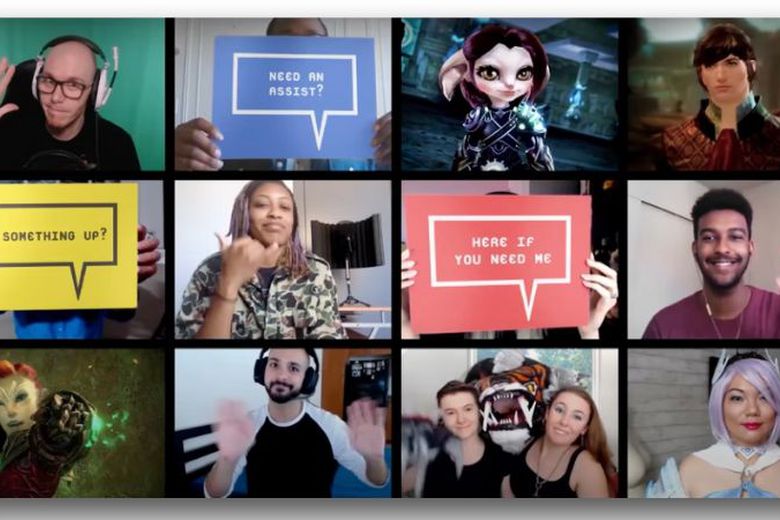
Vimal Patel16/06/22
4 min read

Since the pandemic there has been a notable shift to digital’ but in the case of fundraising, this couldn’t be more true. In early 2020, we all had to reconsider how things were done and none more so than charity fundraisers.
For some it was simply getting a reliable means of online donations up and running, for others it was finding inventive ways to allow supporters to get involved in remote fundraising, often from their own homes, to replace the income generated from events, collections and other public-facing activities.
As a result, digital fundraising has taken a leap forward, with many organisations finding new ways of reaching potential donors, engaging existing supporters, and ultimately maintaining income.
And virtual fundraising is likely to be here for sometime to come. Whilst the pandemic may no longer be placing restrictions on in-person events, it is clear that many of us believe the move to digital has added a new dimension to the traditional means of raising funds. A recent survey by The Fundraiser found that 70% of charities interviewed had moved to online fundraising with no plans of reverting post-pandemic. Event fundraisers also commented that there were clear differences between virtual and live events, and that running a mixture of both formats would be beneficial.

Some of the advantages of digital fundraising events are:
Whether you are a digital fundraising pro, or your organisation is still getting to grips with moving online, here are some interesting examples of how charities are using digital technology to enhance their fundraising activities and increase online revenue.
Whilst using third party donation platforms such as Just Giving can give a quick solution to receiving funds online, the fees can mount up, and the lack of consistent process can leave donors feeling disengaged with your cause.
Creating a dedicated donation platform gives you greater control over content, campaigns and branding, and will integrate seamlessly with your existing website, providing a more streamlined approach to online income generation. It also gives your web visitors a more personalised and engaging user experience, meaning they are more likely to return and donate again.
Make-A-Wish implemented their new website with a dedicated donation platform in 2019, including a completely redesigned and streamlined donation journey. In the first six months of the platform going live, the team saw a year-on-year increase of 50% in online donation revenue. The improved donation journey has put the supporter in control, with the freedom to choose how they wish to donate, while Apple pay and Google pay compatibility ensure that making a donation or supporting a fundraising campaign is quick and hassle-free.

Whilst it may seem out of reach for those with limited budgets, the investment is not always as much as imagined, and today’s donation platforms are often a simple bolt-on solution to your existing website, keeping the transition simple and the installation cost-effective.
Owning your own platform also means you own the process and the data, reducing admin and enabling you to engage with donors post-donation or event, enabling you to harness longer-term support, as the suicide charity, Grassroots, discovered.

We launched the platform at the end of November 2020, which was perfect timing for our donation calendar. We had a strong first month, bringing in more one-off donations than the previous December. Donors were also able to share their reasons for donating, which meant we could connect with them on a more personal level. Our new donation platform has not only helped grow our year-on-year donations but also provided a welcoming donor experience that enables us to connect with our donors on a more personal level

One of the great advantages of digital is its accessibility and flexibility to offer people the information they need at any time of the day or night. But that can also present problems with engagement, when someone wants to ask a question or request assistance out of hours. Many charities are using AI and chatbots to help overcome this hurdle, and some have even implemented it for fundraising.

The US-based children’s charity Cars for Kids is a great example of this - their weekly fundraising car auctions had to be moved completely online during the pandemic, using live streaming on Facebook. With over 10,000 people viewing the auctions, the number of questions and comments were unmanageable for the team to respond to. By using a chatbot to answer many of the most common questions that were asked, and applying AI to understand which comments were from potential bidders, they could automatically send them information about the auction.
Since the chatbot was launched, the average sale price of cars at the auction has increased, enabling the charity to raise substantially more funds from each auction.
Despite the move to digital, people still crave authenticity and transparency, and one of the best ways to achieve this online is through video. This is particularly important in the charity sector, where donors want or have a personal connection with the cause, the beneficiaries or the team. It doesn’t need to be professional video, in fact amateur videos often drive greater online engagement, particularly on social media.
How to jump on the trend of human-centered video? Go live on your social media channels. Share what you are working on, gain engagement in online fundraising events from the outset, build anticipation and affinity with the individuals involved. Or get your supporters to share their own videos of how they are raising funds to encourage others to support!

Facebook results alone provide proof that this form of online fundraising is making waves:
Build these authentic videos into your fundraising campaigns and engagement will undoubtedly grow.
I am most definitely not any kind of expert in this area, however many of my colleagues are, so I know how powerful live-stream gaming platforms like Twitch are. Similar to YouTube, but focusing solely on live video, 15 million users tune in to watch an average of 1.5 hours of Twitch live streams every day.
During Suicide Prevention Awareness Month, the Seize the Awkward campaign ran a three-day Twitch event to raise funds for their mental health work - a great example of using new technology and finding the right platforms to reach your ideal target audience.

Labelled the ‘Holy grail of social experiences’ by Mark Zuckerberg himself, augmented reality and virtual reality can bring a new level of digital engagement from donors and supporters. The RNIB recently launched Eyeware, an AR app that simulates what it is like to suffer from various forms of eye conditions, helping develop understanding and harness empathy with supporters.
Australian charity Pencils of Promise used a virtual reality experience to increase donations at their high profile gala event pre-pandemic, offering guests an insight into what it would be like to go to school in a developing nation. The result was an incredible increase of $500,000 in donations, and they later used the video on Facebook, gaining over 2 million views.
With social distancing sweeping the globe, contactless payments have really taken off, and that also includes contactless donations. The RNLI are just one charity who have begun to use this to great effect for their fundraising. Having launched it at the Boat Race event in April, they have now installed over 60 contactless donation points at their lifeboat stations, where visitors and passers-by can tap their payment card to make a set donation to the cause.
The Salvation Army have also used mobile payments to supplement their traditional red bucket donation campaign. “People don’t carry cash so much anymore, so we have to adapt” says the Salvation Army’s Brian Molohan. The charity hopes that by adding Apple and Google Pay options to their fundraising activities, it will boost giving to the red kettle campaign, which makes up 10% of their annual fundraising.

These are just a few of the innovative ways that technology can be used to support virtual fundraising and increase online giving. Embracing digital channels and new ways of working can open up new possibilities for charities, and I hope that these examples not only provide some inspiration, but encourage you to take a look possible new ways your charity could boost its fundraising online.